In the ever-evolving world of SUVs, two prominent contenders have emerged in the European market: the Renault Espace and the Dacia Bigster. Both offer unique features and specifications that cater to distinct consumer needs, making them worthy of comparison. Here, we’ll delve into the technical aspects and innovations of these two vehicles to help consumers make an informed choice.
Renault Espace vs Dacia Bigster – Performance, range & efficiency compared
Everyday use, family trips or long-distance drives – here’s where the differences show.
Discover whether Renault Espace or Dacia Bigster fits your lifestyle better.
Design and Dimensions
The Renault Espace is a sophisticated SUV that combines functionality with a sleek design. Measuring 4,722 mm in length, 1,843 mm in width, and 1,645 mm in height, it offers a spacious interior that supports 5 to 7 passengers. This makes it ideal for families or those who prioritize space.
In contrast, the Dacia Bigster leans towards a more rugged aesthetic while still ensuring ample room for five passengers. Slightly shorter at 4,570 mm, broader at 1,813 mm, and taller at 1,705 mm, the Bigster emphasizes off-road capabilities and practicality. It boasts a trunk capacity ranging from 546 L to 667 L, depending on the variant, making it a contender for those with active lifestyles.
Powertrains and Performance
The Renault Espace is equipped with a robust full hybrid powertrain, delivering 200 HP from its 1199 cm³ engine. This configuration results in an impressive acceleration time of 0 to 100 km/h in just 8.8 seconds. The Espace offers front-wheel drive with an automatic gearbox and a commendable fuel consumption rate of 4.7 L/100 km. Additionally, its top speed is capped at 174 km/h, appealing to drivers seeking both performance and efficiency.
On the other hand, the Dacia Bigster presents a more versatile engine lineup, including petrol mild-hybrid (MHEV), full hybrid, and LPG variants. The power options range from 130 HP to 155 HP, with the 1199 cm³ engine echoing the performance characteristics of the Espace. The Bigster's acceleration times vary, with the quickest reaching 0 to 100 km/h in 9.7 seconds. It offers both front- and all-wheel drive configurations, making it versatile for both urban and rugged terrains.
Efficiency and Emission Standards
In terms of efficiency, the Renault Espace shines with a CO2 emission rating of 107 g/km, placing it within the C efficiency class. Its combination of size and hybrid technology makes it a sustainable choice for those environmentally conscious.
The Dacia Bigster has a broader range of emission ratings, varying from 106 g/km to 137 g/km depending on the model. It falls under efficiency classes C, D, and E. While it is less efficient than the Espace in its higher-output versions, it still manages to maintain strong performance with reasonable fuel consumption, averaging between 4.7 L/100 km and 6.1 L/100 km.
Interior Features and Technology
When it comes to interior space and technology, the Renault Espace excels with modern conveniences. Highlighted by a sophisticated infotainment system, advanced connectivity options, and premium materials, it promises a comfortable ride for all passengers. The spaciousness allows for varying seat configurations, making it adaptable for both passengers and cargo.
The Dacia Bigster, designed for practicality, offers a less luxurious interior but compensates with robust utility features. It includes essential tech features and a straightforward infotainment system, appealing to budget-conscious buyers who value function over extravagance. This simplicity, coupled with ample storage solutions, makes the Bigster a reliable companion for everyday use.
Conclusion: Choosing Your Ideal SUV
Ultimately, the choice between the Renault Espace and the Dacia Bigster depends on the buyer's specific needs and preferences. The Espace is ideal for those seeking a high-performance, spacious, and technologically advanced SUV, making it a prime choice for families. Conversely, the Bigster caters to individuals looking for versatility, rugged appeal, and practicality at a more accessible price point.
As the automotive landscape continues to evolve, both of these models exemplify the innovations and diverse offerings available in the SUV segment, appealing to a broad array of drivers in search of their perfect vehicle.
Here’s where it gets real: The technical differences in detail
Costs and Efficiency:
When it comes to price and running costs, the biggest differences usually appear. This is often where you see which car fits your budget better in the long run.
Dacia Bigster has a significantly advantage in terms of price – it starts at 20600 £, while the Renault Espace costs 37500 £. That’s a price difference of around 16980 £.
Fuel consumption also shows a difference: Dacia Bigster manages with 4.70 L and is therefore minimal more efficient than the Renault Espace with 4.90 L. The difference is about 0.20 L per 100 km.
Engine and Performance:
Power, torque and acceleration are the classic benchmarks for car enthusiasts – and here, some clear differences start to show.
When it comes to engine power, the Renault Espace has a noticeable edge – offering 200 HP compared to 155 HP. That’s roughly 45 HP more horsepower.
In acceleration from 0 to 100 km/h, the Renault Espace is somewhat quicker – completing the sprint in 8.80 s, while the Dacia Bigster takes 9.70 s. That’s about 0.90 s faster.
In terms of top speed, the Dacia Bigster performs hardly perceptible better – reaching 180 km/h, while the Renault Espace tops out at 174 km/h. The difference is around 6 km/h.
Space and Everyday Use:
Whether family car or daily driver – which one offers more room, flexibility and comfort?
Seats: Renault Espace offers distinct more seating capacity – 7 vs 5.
In curb weight, Dacia Bigster is somewhat lighter – 1425 kg compared to 1673 kg. The difference is around 248 kg.
In terms of boot space, the Renault Espace offers barely noticeable more room – 692 L compared to 667 L. That’s a difference of about 25 L.
In maximum load capacity, the Renault Espace performs to a small extent better – up to 2224 L, which is about 287 L more than the Dacia Bigster.
When it comes to payload, Renault Espace to a small extent takes the win – 581 kg compared to 467 kg. That’s a difference of about 114 kg.
Who wins the race?
The Dacia Bigster proves to be secures victory with a clear margin and therefore becomes our DriveDuel Champion!
Dacia Bigster is the better all-rounder in this comparison.

Dacia Bigster
Renault Espace
The Renault Espace is a testament to innovative design, combining versatility with comfort to offer a unique driving experience. Its sleek exterior is complemented by a spacious interior, designed to cater to the needs of families and adventurers alike. With advanced technology and a focus on safety, the Espace seamlessly blends practicality with modern sophistication, making it a standout choice in the MPV segment.
details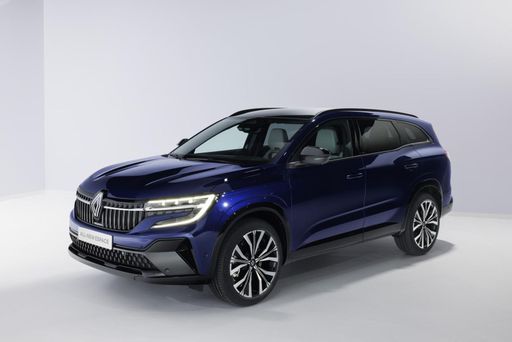 @ Renault
@ Renault
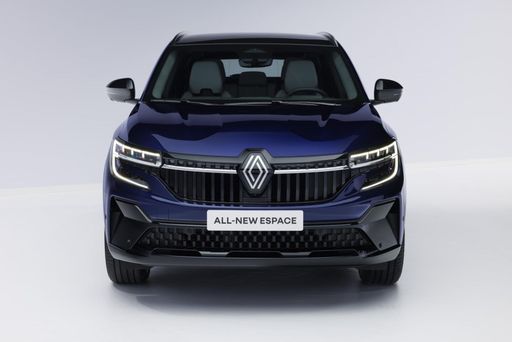 @ Renault
@ Renault
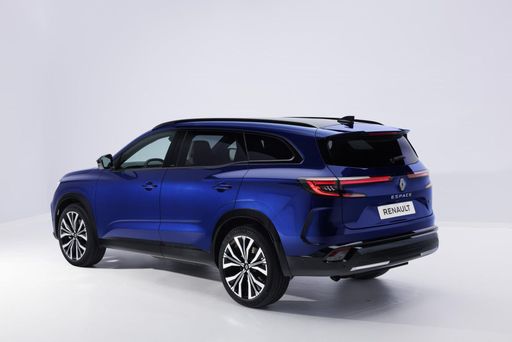 @ Renault
@ Renault
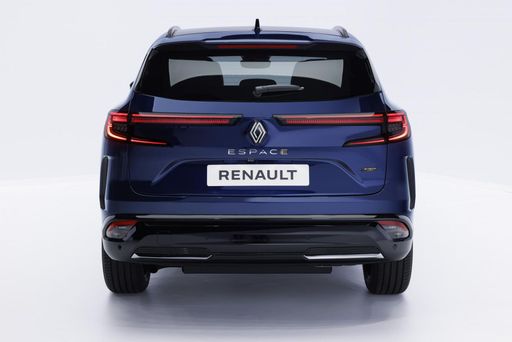 @ Renault
@ Renault
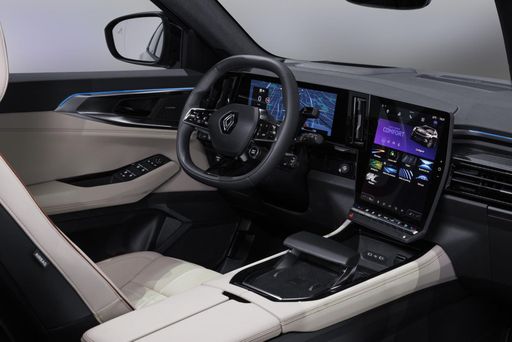 @ Renault
@ Renault
Dacia Bigster
The Bigster is poised to redefine the SUV segment with its bold design and spacious interior, catering to the needs of both families and adventure seekers alike. Emphasizing sustainability and practicality, this model reflects a modern approach to automotive engineering, making it a compelling choice for environmentally conscious drivers. With its striking presence on the road, the Bigster not only captures attention but also embodies a new era of versatile mobility.
details @ media.renault.at
@ media.renault.at
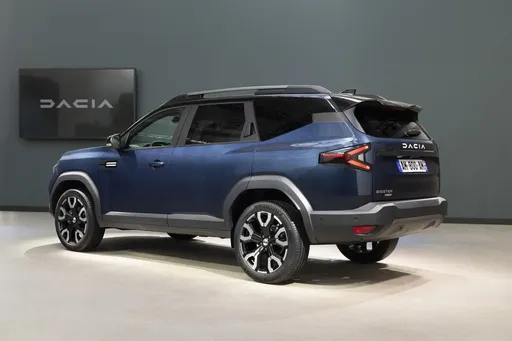 @ media.renault.at
@ media.renault.at
 @ media.renault.at
@ media.renault.at
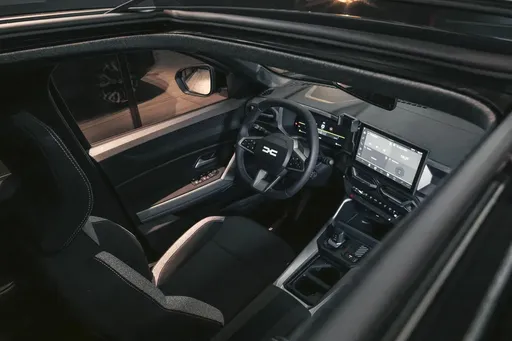 @ media.renault.at
@ media.renault.at
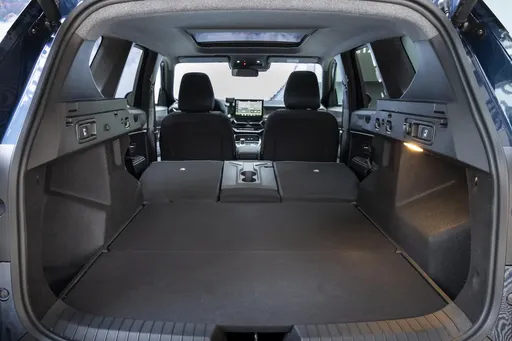 @ media.renault.at
@ media.renault.at

|

|
|
|
|
Costs and Consumption |
|
|---|---|
|
Price
37500 - 41400 £
|
Price
20600 - 26600 £
|
|
Consumption L/100km
4.90 L
|
Consumption L/100km
4.7 - 7.1 L
|
|
Consumption kWh/100km
-
|
Consumption kWh/100km
-
|
|
Electric Range
-
|
Electric Range
-
|
|
Battery Capacity
-
|
Battery Capacity
-
|
|
co2
110 g/km
|
co2
106 - 137 g/km
|
|
Fuel tank capacity
55 L
|
Fuel tank capacity
50 - 55 L
|
Dimensions and Body |
|
|---|---|
|
Body Type
SUV
|
Body Type
SUV
|
|
Seats
5 - 7
|
Seats
5
|
|
Doors
5
|
Doors
5
|
|
Curb weight
1673 - 1783 kg
|
Curb weight
1425 - 1547 kg
|
|
Trunk capacity
212 - 692 L
|
Trunk capacity
510 - 667 L
|
|
Length
4746 mm
|
Length
4570 mm
|
|
Width
1830 mm
|
Width
1813 mm
|
|
Height
1645 mm
|
Height
1705 mm
|
|
Max trunk capacity
2054 - 2224 L
|
Max trunk capacity
1813 - 1937 L
|
|
Payload
404 - 581 kg
|
Payload
383 - 467 kg
|
Engine and Performance |
|
|---|---|
|
Engine Type
Full Hybrid
|
Engine Type
Petrol MHEV, Full Hybrid, LPG
|
|
Transmission
Automatic
|
Transmission
Manuel, Automatic
|
|
Transmission Detail
Automatic Gearbox
|
Transmission Detail
Manual Gearbox, Automated Manual
|
|
Drive Type
Front-Wheel Drive
|
Drive Type
All-Wheel Drive, Front-Wheel Drive
|
|
Power HP
200 HP
|
Power HP
130 - 155 HP
|
|
Acceleration 0-100km/h
8.80 s
|
Acceleration 0-100km/h
9.7 - 11.2 s
|
|
Max Speed
174 km/h
|
Max Speed
180 km/h
|
|
Torque
-
|
Torque
230 Nm
|
|
Number of Cylinders
3
|
Number of Cylinders
3 - 4
|
|
Power kW
147 kW
|
Power kW
96 - 115 kW
|
|
Engine capacity
1199 cm3
|
Engine capacity
1199 - 1799 cm3
|
General |
|
|---|---|
|
Model Year
2025
|
Model Year
2025
|
|
CO2 Efficiency Class
C
|
CO2 Efficiency Class
E, D, C
|
|
Brand
Renault
|
Brand
Dacia
|
What drivetrain options does the Renault Espace have?
The Renault Espace is available as Front-Wheel Drive.
The prices and data displayed are estimates based on German list prices and may vary by country. This information is not legally binding.
